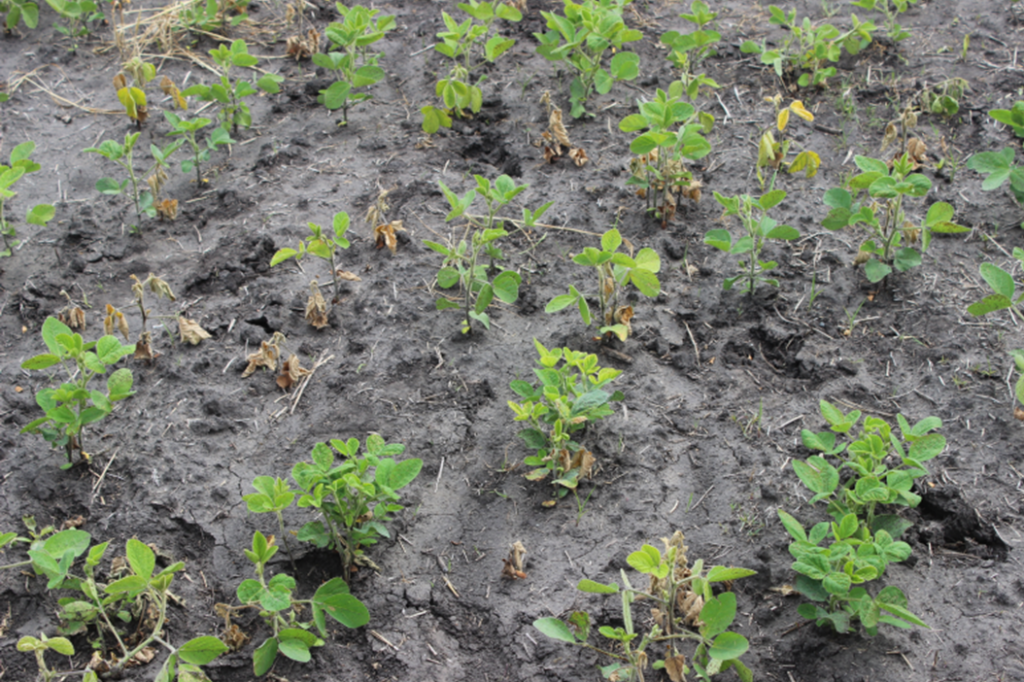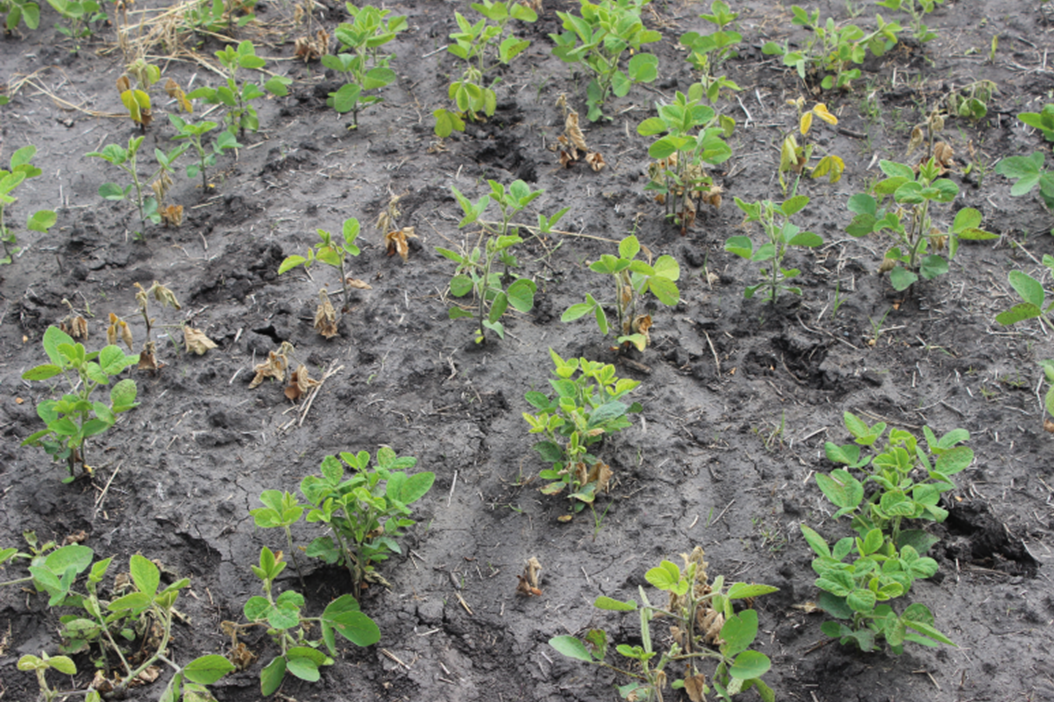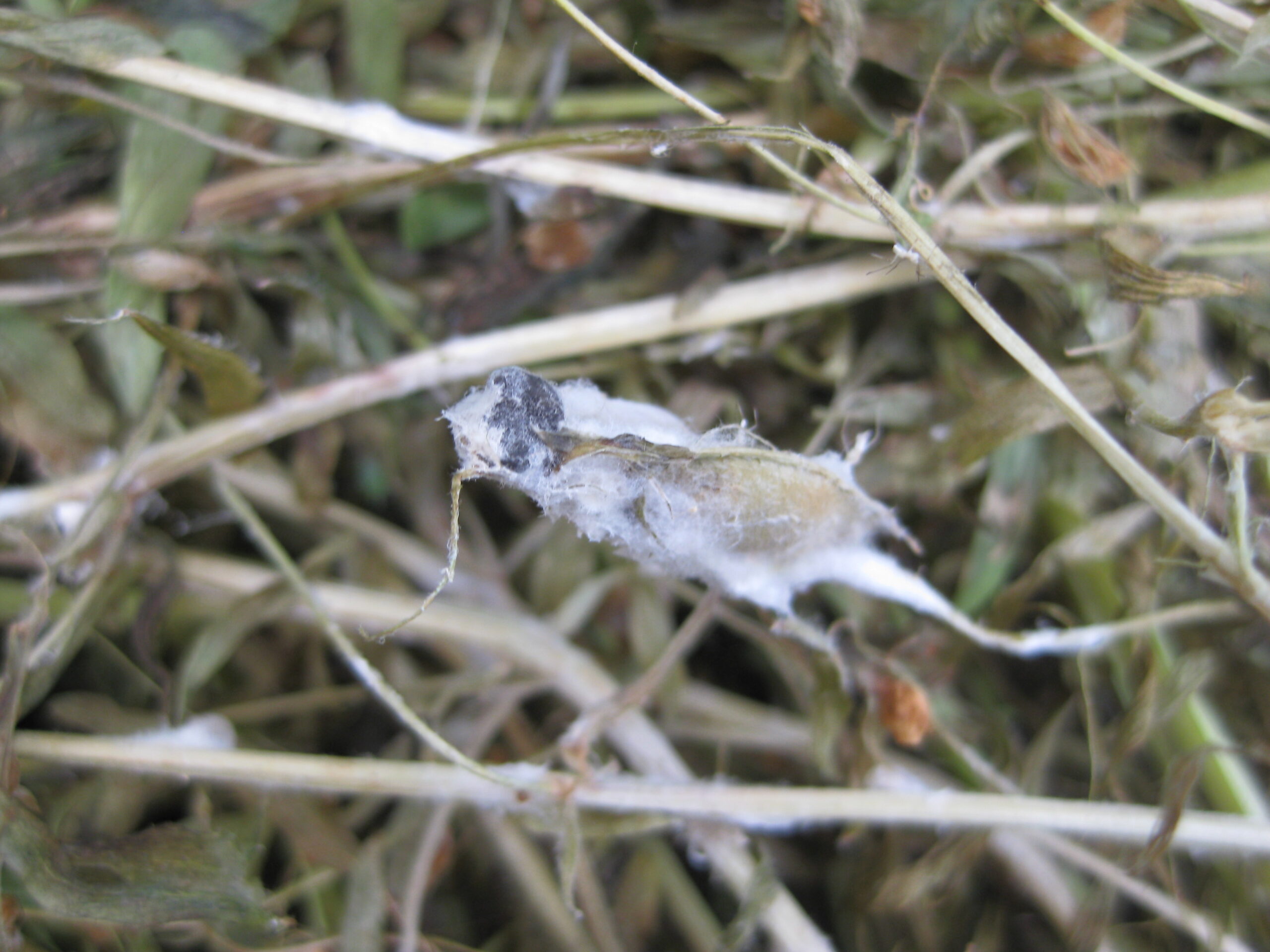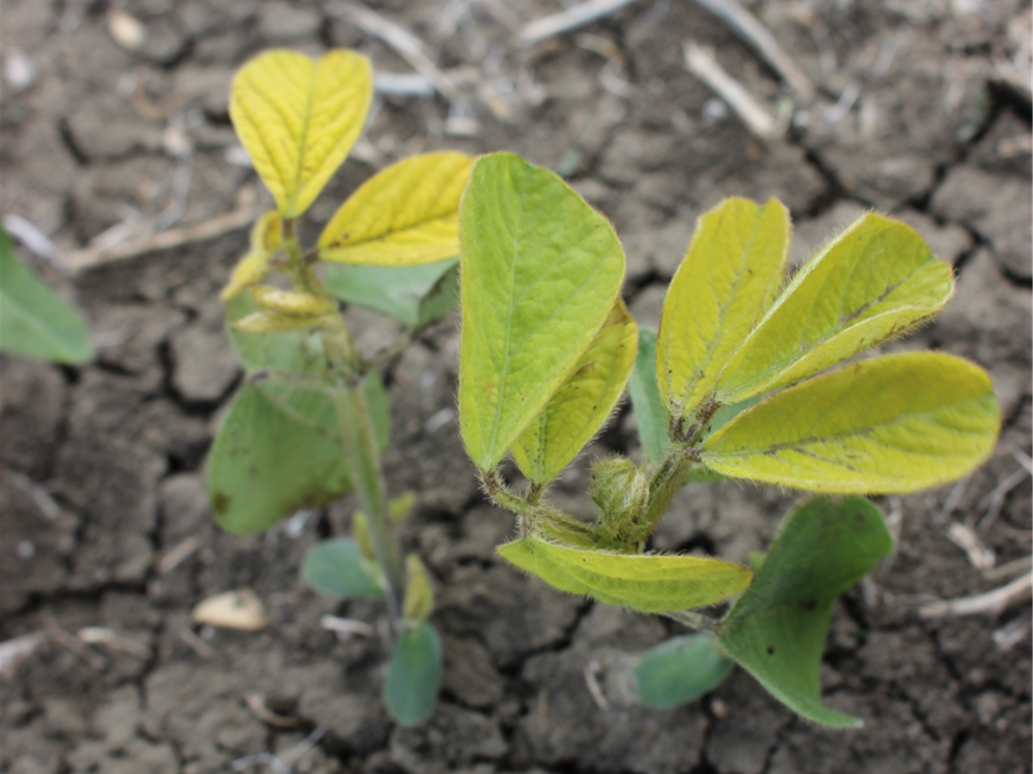By Bruce Barker, P.Ag.
Phytophthora root rot (PRR) is a significant disease in many areas where soybeans are grown. The fungus Phytophthora sojae causes PRR. Yield losses can be substantial .
In Manitoba, there were multiple reports of PRR in soybeans in the Red River Valley in 2016. A 2016 disease survey in Manitoba on 40 soybean fields found 38 per cent of the fields identified with Phytophthora spp. In at least one case, the incidence was reported as up to 30 per cent of plants affected. A disease survey is also being conducted in 2017, and Saskatchewan Pulse Growers will be providing samples to Agriculture and Agri-Food Canada at Brandon and Morden to assess for the prevalence of the disease in Saskatchewan. In Saskatchewan, while PRR is a concern, only limited testing has been conducted.
PRR is caused by an oomycete and thrives under water-logged conditions. It can kill and damage seedlings and plants throughout the growing season, from the time of planting until nearly harvest. This disease is favored by wet and warm soil conditions, especially saturated conditions early in the growing season.
Symptoms can show up in patches in the field (low spots) or as scattered plants. Severely infected plants will completely senesce, but the leaves will stay attached. PRR is common in areas of Manitoba that have had a history of soybean production and in years where there are water-logged conditions.
Symptoms can be similar to other root rot diseases. For PRR, Sherri Roberts with the Saskatchewan Ministry of Agriculture says to look for areas within the field where plants are yellowed. Plants may be killed in pockets in the field, or remnants of dying seedlings can be scattered throughout a field.
Symptoms of PRR on older plants with low tolerance include yellowing between veins and leaf margins, and chlorosis of upper leaves, followed by wilting. Leaves remain attached after the plant dies. Cortex and vascular tissue are discolored.
Stem symptoms are long, narrow, sunken brown lesions that progress up the stem from below the soil line. Occasionally a lesion will occur on one side of the plant only and plants with unilateral stem lesions may not wilt. Generally the stem rot phase is easily identified by the dark brown color on the exterior surface of the stem and lower branches.
Disease Management
More than 40 races of P. sojae have been identified. In North Dakota, a 2002 survey found the most prevalent races in this area were races 3 and 4 (about 80 per cent of the isolates). Races 1, 5, 8, 21, 25, 28, 41, 43, and 44 are also found, but at low frequency. In Manitoba, race 4 is the most common while in Saskatchewan the races of the pathogen have not yet been identified. There can also be multiple races within a field.
Plant breeders have focussed on developing soybean cultivars with major gene resistance. However in established soybean growing areas, races of the pathogen now exist in the population to overcome the major resistance genes. As a result, growers need to know the race or races that they have within their fields as variety selection that includes hybrids with resistant genes, can help reduce the impact of the disease. The 2017 disease survey in Manitoba and Saskatchewan will attempt to identify the predominant races in each province.
The Manitoba Seed Guide provides information on resistant genes in soybean varieties that are effective against certain races of Phytophthora spp.
Agronomic management of the disease includes trying to create an environment that reduces the pathogen survivability. This may include using drainage to help manage soil moisture. Seed treatments are recommended and especially useful when cool, wet soil conditions develop after planting.
Crop rotation can also help prevent the build-up of inoculum, although it will not eliminate or eradicate PRR since the oospores can survive in the soil for long periods of time. Avoid a soybean on soybean rotation as the Phytophthora population can build up and promote the development of new races.
If fields are known to have PRR, biosecurity measures such as cleaning machinery of infected soil before moving to uninfected fields, may also help prevent the spread of the pathogen.
The bottom line for Saskatchewan soybean growers: scout fields for symptoms, and utilize agronomic practices to help prevent the development and spread of the disease.

Source: Sherri Roberts, Saskatchewan Ministry of Agriculture

Source: Sherri Roberts, Saskatche- wan Ministry of Agriculture



